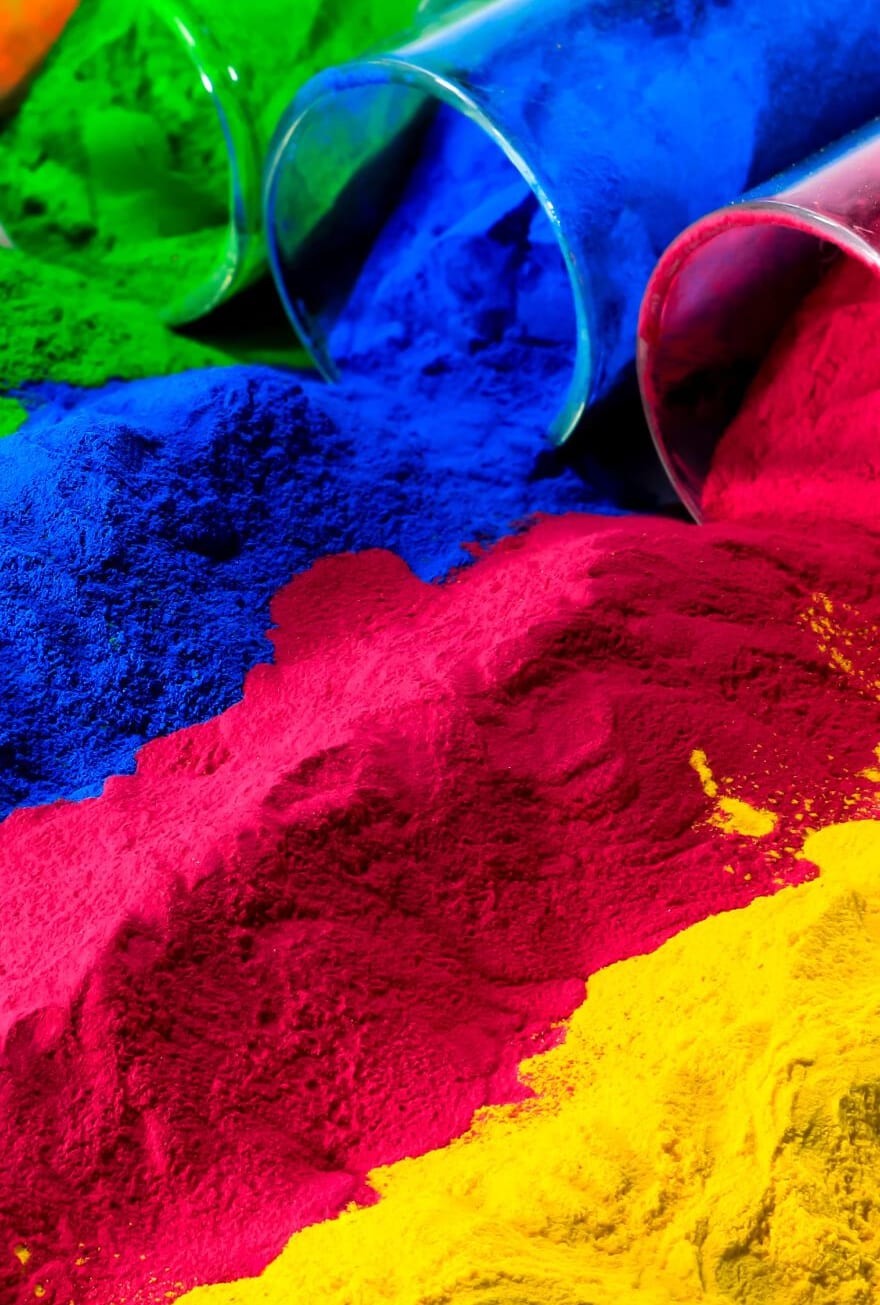Knowde Enhanced TDS
Identification & Functionality
- Pigment Type
- CASE Ingredients Functions
- Technologies
Features & Benefits
- Product Background
DAY-GLO HM and HMS Soluble Toners are high strength, transparent fluorescent colorants designed for flexo and gravure application on flexible packaging papers, films, and foils. DAY-GLO HM Soluble Toners are standard strength, whereas the DAY-GLO HMS offer higher strength to give the inkmaker increased latitude in his formulations. Water washable and moisture set letterpress inks can also be made from these toners.
DAY-GLO Soluble Toners are transparent and should be printed on white stock or over a white ink to achieve the maximum daylight fluorescent brightness. In flexographic trial press runs, inks made with these toners have been run at speeds up to and exceeding 600 feet/minute. These tests were conducted on treated polyethylene using both a co-solvent polyamide white ink and a nitrocellulose modified alcohol soluble polyamide white to back the fluorescent inks. The formulations that were used for the fluorescent inks are included in this bulletin. Thorough testing of their suitability is advised before large scale commercial runs are attempted. Day-Glo Color Corp. technical personnel will be glad to discuss your applications and any special problems that may arise.
Applications & Uses
- Markets
- Compatible Polymers & Resins
- Ink & Toner Type
- Compatible Modifying Resins
SS Nitrocellulose Hercules Inc RS Nitrocellulose Hercules Inc Ethyl Cellulose N-4 Hercules Inc Cellulose Acetate Propionate (CAP-504-0.2) Eastern Chemical Co. Cellulose Acetate Butyrate (CAB-553-0.4) Eastern Chemical Co. Krumbhaar Resin K-1717-B Lawter Chemicals Inc Pentalyn 255 Hercules Inc Elvacite 2043 E. I. duPont Acryloid B-66 Rohm and Haas Co. Butvar B-79 Monsanto Co VYNC Union Carbide Co This list is provided to give the ink formulator a starting point. DAY-GLO HM and HMS Soluble Toners should be tested with each ink system used by the inkmaker to assure suitability. It should be noted that these toners are not compatible with polyamide resins but make excellent inks for printing treated polyethylene when modified with nitrocellulose or propionate resins
For detailed information please refer this Link:
Properties
- Appearance
- Granular Powder
- Insoluble in
- Water, Aromatic hydrocarbons, Aliphatic
- Soluble in
- Esters, Glycols, Glycol ethers, Ketones, Alcohol/ester blends
- Typical Properties
| Value | Units | Test Method / Conditions | |
| Softening Point | min. 90 | °C | Fisher-Johns Melting Point Apparatus |
| Specific Gravity | 1.38 | — | — |
Regulatory & Compliance
Technical Details & Test Data
- Lightfastness
Inks made from DAY-GLO HM and HMS Soluble Toners are intended for indoor uses only. They are not recommended for window use or outdoor exposure. Different modifying resins will have varying effects on the lightfastness of the finished product. Suitable tests should be conducted.
- Recommended Solvents
HM - 80% Ethyl Alcohol and 20% Ethyl, Isopropyl or N-Propyl Acetate
HMS - 75% Ethyl Alcohol and 25% Ethyl, Isopropyl or N-Propyl Acetate
Ethyl Acetate
Acetone
Methyl Ethyl Ketone
Cellosolve1
Ethylene Glycol
Methyl Isobutyl Ketone
Diethylene Glycol
Propylene Glycol
2-Nitropropane
1Union Carbide Co.Other solvents or solvent blends may be acceptable, and their suitability should be thoroughly tested before production is attempted.

